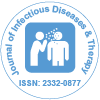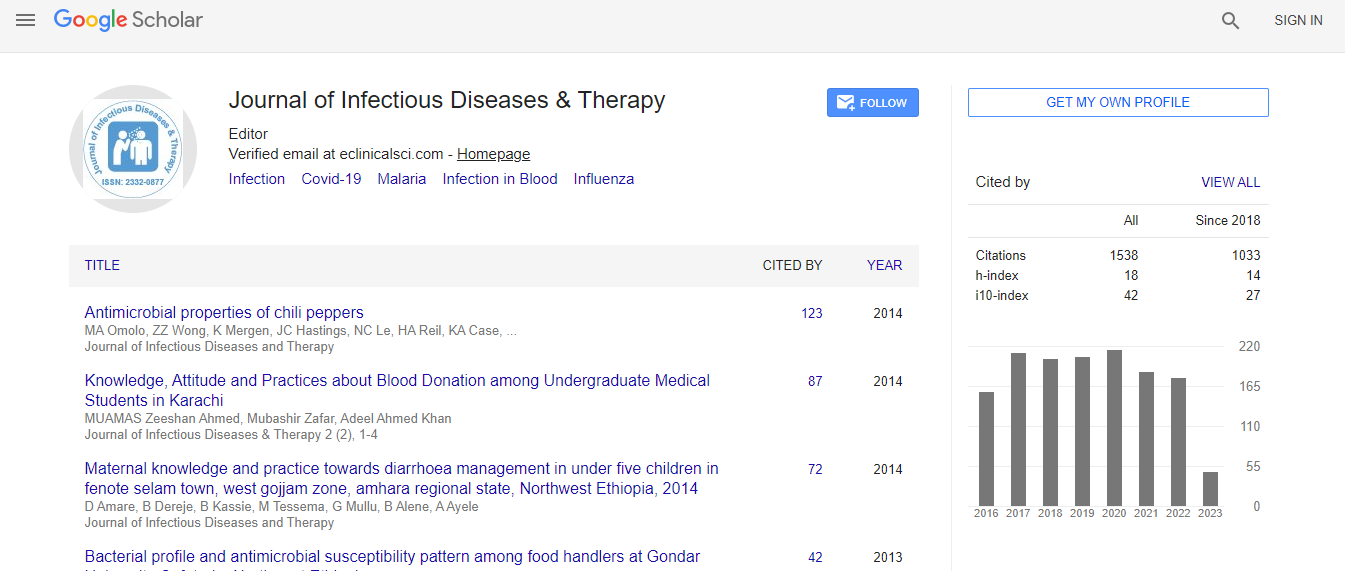Our Group organises 3000+ Global Conferenceseries Events every year across USA, Europe & Asia with support from 1000 more scientific Societies and Publishes 700+ Open Access Journals which contains over 50000 eminent personalities, reputed scientists as editorial board members.
Open Access Journals gaining more Readers and Citations
700 Journals and 15,000,000 Readers Each Journal is getting 25,000+ Readers
Google Scholar citation report
Citations : 1529
Journal of Infectious Diseases & Therapy received 1529 citations as per Google Scholar report
Indexed In
- Index Copernicus
- Google Scholar
- Open J Gate
- RefSeek
- Hamdard University
- EBSCO A-Z
- OCLC- WorldCat
- Publons
- Euro Pub
- ICMJE
Useful Links
Recommended Journals
Related Subjects
Share This Page
Epidemiological surveys of and research on, soil-transmitted helminths in Southeast Asia: A systematic review
Joint Event on 4th Annual Congress on Infectious Diseases & 5th International Conference on Neglected Tropical & Infectious Diseases
Aung Tun
National NTD Control Programme, Ministry of Health and Sports, Myanmar
Posters & Accepted Abstracts: J Infect Dis Ther
Abstract
This review analyses published data on STH prevalence and intensity in Southeast Asia over the time period of 1900 to the present to describe age related patterns in these epidemiological measures. This is with a focus on the four major parasite species affecting humans. Data were also collected on the diagnostic methods used in the published surveys and how the studies were designed to facilitate comparative analyses of recorded patterns and changes therein over time. PubMed, Google Scholar, EMBASE, ISI Web of Science, Cochrane Database of Systematic Reviews and the Global Atlas of Helminth Infections search engines were used to identify studies on STH in Southeast Asia with the search based on the major key words, and variants on, “soil-transmitted helminth” “Ascaris” “Trichuris” “hookworm” and the country name. A total of 280 studies satisfied the inclusion criteria from 11 Southeast Asian countries. It was concluded that the epidemiological patterns of STH infection by age and species mix in Southeast Asia are similar to those reported in other parts of the world. In the published studies there were a large number of different diagnostic methods used with differing sensitivities and specificities, which makes comparison of the results both within and between countries difficult. There is a clear requirement to standardise the methods of both STH diagnosis in faecal material and how the intensity of infection is recorded and reported in future STH research and in monitoring and evaluation (M&E) of the impact of continuing and expanding mass drug administration (MDA) programmes.Biography
E-mail: aungtun@gmail.com

 Spanish
Spanish  Chinese
Chinese  Russian
Russian  German
German  French
French  Japanese
Japanese  Portuguese
Portuguese  Hindi
Hindi 